Finding the Clovis Culture
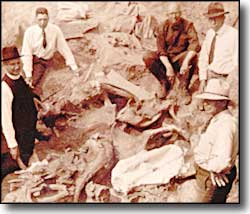 In 1926, when scientists from the Colorado Museum of Natural History found a stone projectile point imbedded in the rib of a bison antiquus, a large predecessor of modern American bison, changed the whole time frame for human habitation in North America.
In 1926, when scientists from the Colorado Museum of Natural History found a stone projectile point imbedded in the rib of a bison antiquus, a large predecessor of modern American bison, changed the whole time frame for human habitation in North America. That point, found near the town of Folsom, in north eastern New Mexico, proved that early man had been hunting bison as far back as 9,000 B.C.E., 7,000 years earlier than previously thought. But that find was just the first of many that have pushed back our understanding of when humans came to the Americas. The hunt for the earliest American was on!
 As news of the Folsom find began to spread, people started taking an interest in old bones found in the ground. One of those was a 19 year old Eagle Scout from Clovis, New Mexico. His name was James Ridgely Whiteman.
As news of the Folsom find began to spread, people started taking an interest in old bones found in the ground. One of those was a 19 year old Eagle Scout from Clovis, New Mexico. His name was James Ridgely Whiteman.One day in February of 1929, Whiteman was walking along Blackwater Draw, an arroyo between Clovis and Portales. In a letter he wrote to the Smithsonian Institution, he said he found fluted points in association with mammoth bones.
Mammoths weren’t alive at the time of the Folsom kills. If Whiteman was right, his find was even older.
No one paid much attention to Whiteman's letter, and the discovery he had made in Blackwater Draw went unexplored. In 1932, a horse-drawn scraper that the highway department was using to collect gravel for a road project uncovered a huge pile of bones right where Whiteman had said they were.
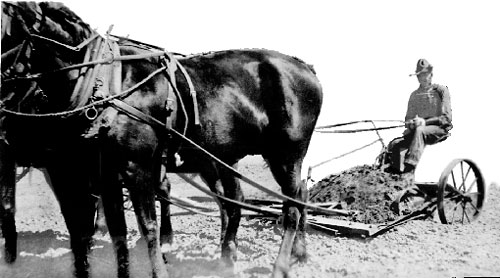
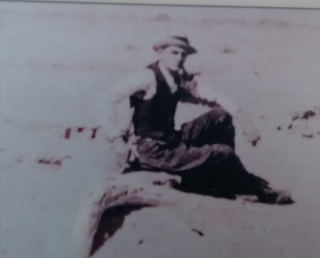 The next year, Edgar B. Howard, an archeologist from the University of Pennsylvania, began a four year excavation of the site. He and his colleagues found ancient spearheads, stone tools, hearths, and evidence of almost continuous human occupation at the site dating back 13,000 years. He named these people the Clovis people, after the nearby town of Clovis, New Mexico.
The next year, Edgar B. Howard, an archeologist from the University of Pennsylvania, began a four year excavation of the site. He and his colleagues found ancient spearheads, stone tools, hearths, and evidence of almost continuous human occupation at the site dating back 13,000 years. He named these people the Clovis people, after the nearby town of Clovis, New Mexico.Howard concluded that Clovis people camped on the west side of the lake, where they could have a view of the surroundings. They didn’t seem to camp for long periods before they moved on to other places. If there were no mammoths around, they hunted smaller game.
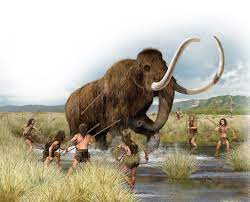 Blackwater Draw was an animal trap. Hunters waited until mammoths and other animals got trapped in the mud at the edge of a lake, then attacked them. Scientists have found other animal bones, too: Bison, saber toothed tigers, ambelodons, large ground sloths, peccaries,and dire wolves. Some might have been hunted, but others died of natural causes, got caught in the mud, or were killed by other animals.
Blackwater Draw was an animal trap. Hunters waited until mammoths and other animals got trapped in the mud at the edge of a lake, then attacked them. Scientists have found other animal bones, too: Bison, saber toothed tigers, ambelodons, large ground sloths, peccaries,and dire wolves. Some might have been hunted, but others died of natural causes, got caught in the mud, or were killed by other animals. By the time of the Folsom Culture, there were no ground sloths, ambelodons or mammoths left, but they hunted at Blackwater Draw, too. Artifacts indicate that they tended to camp on the Northwest edge of the lake, where they could look for approaching herds of bison. Archaeologists can tell that Folsom groups stayed longer than the Clovis groups had, but they, too, moved on once they had skinned and butchered their bison.
One reason people did not remain at Blackwater Draw is that there is no good stone for making points in the area. The stones for points found at Blackwater Draw were brought from other places, including Alibates (near Amarillo, Texas), the upper Colorado River in Colorado, the Valles Caldera in New Mexico's Jemez mountains, and the Sangre de Cristo mountains, north of Santa Fe. The distribution and number of points help archaeologists determine how early man traveled throughout the area.
Today, there is a building sheltering the kill site at Blackwater Draw, which is part of the Blackwater Draw National Historic Landmark. The bones lay on many levels, showing the large period of time in which this site was an active hunting area. The different levels are clearly marked. Down the road is an excellent museum, and camp sites are available at Oasis State Park, which is a little more than four miles away.
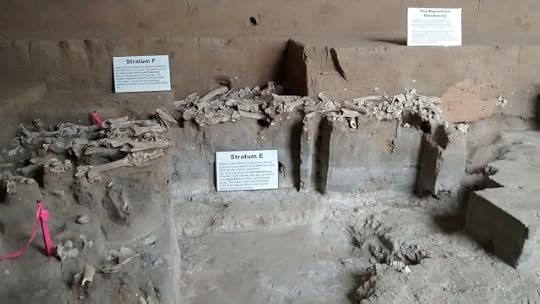
A former middle school Social Studies and English teacher, Jennifer Bohnhoff is now a full time writer of historical and contemporary fiction for middle grade through adult readers. Her middle grade novel, In the Shadow of Sunrise, tells the story of a handicapped Folsom boy who is on the verge of manhood and learning his strengths.
Published on April 24, 2025 11:04
No comments have been added yet.



